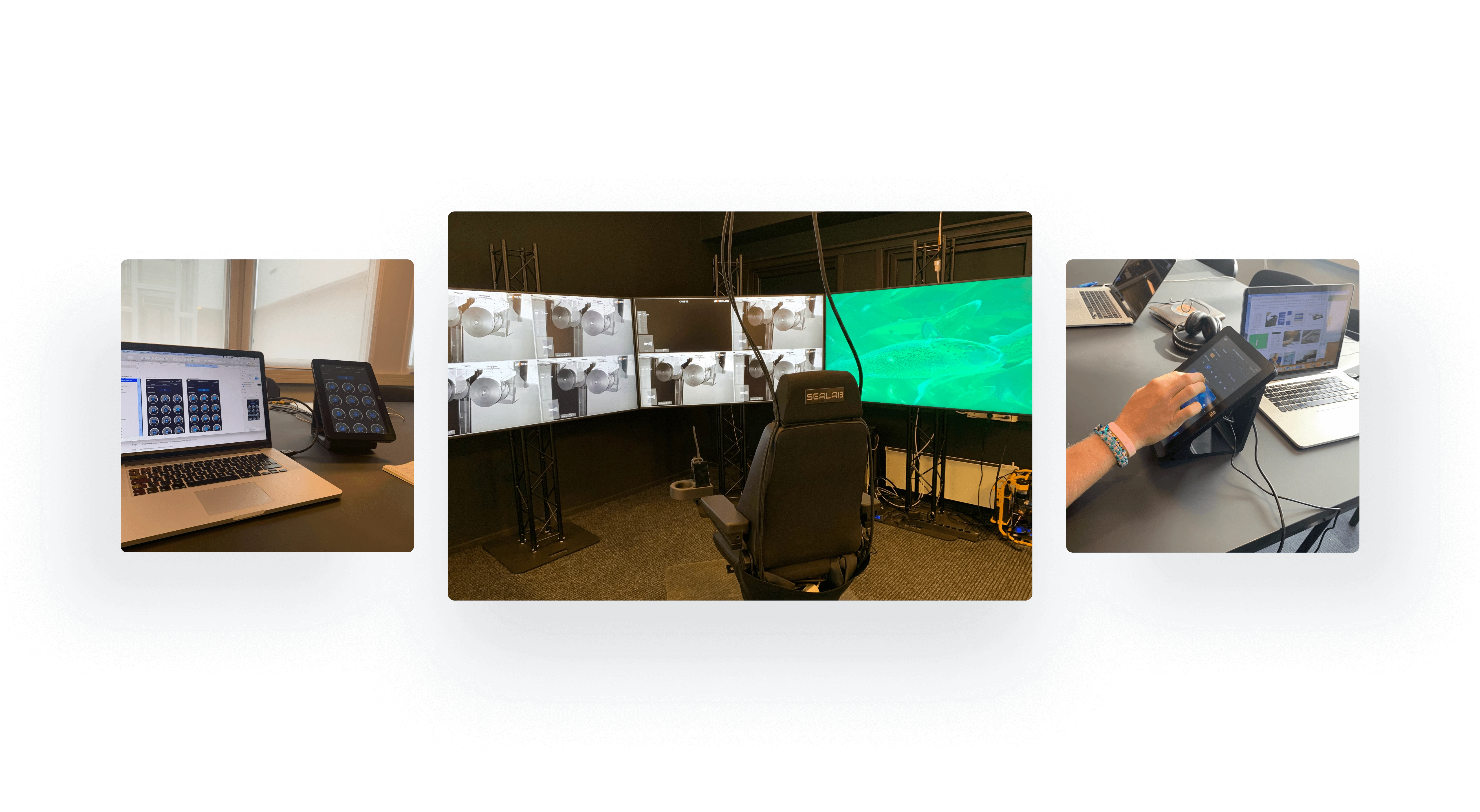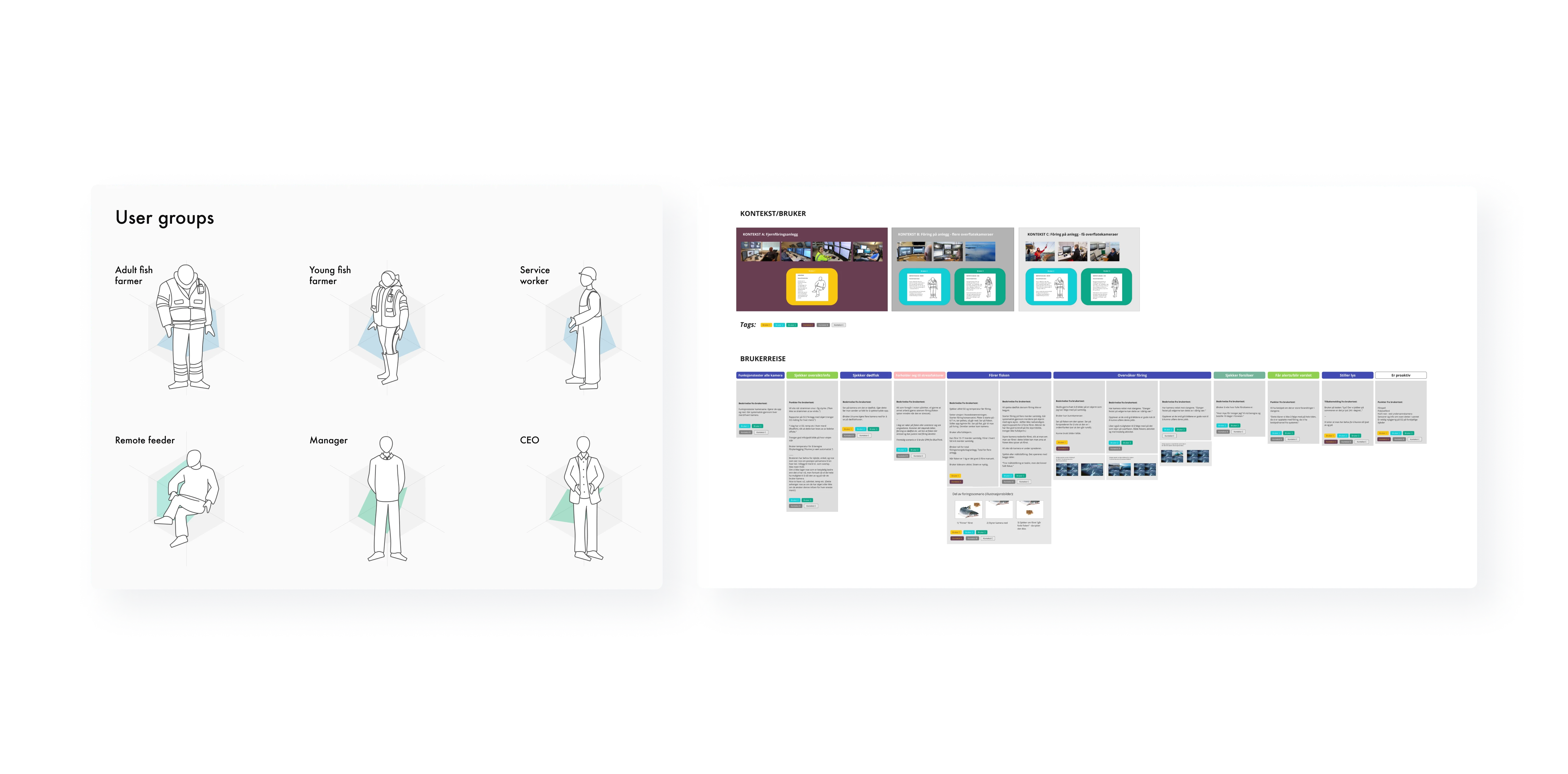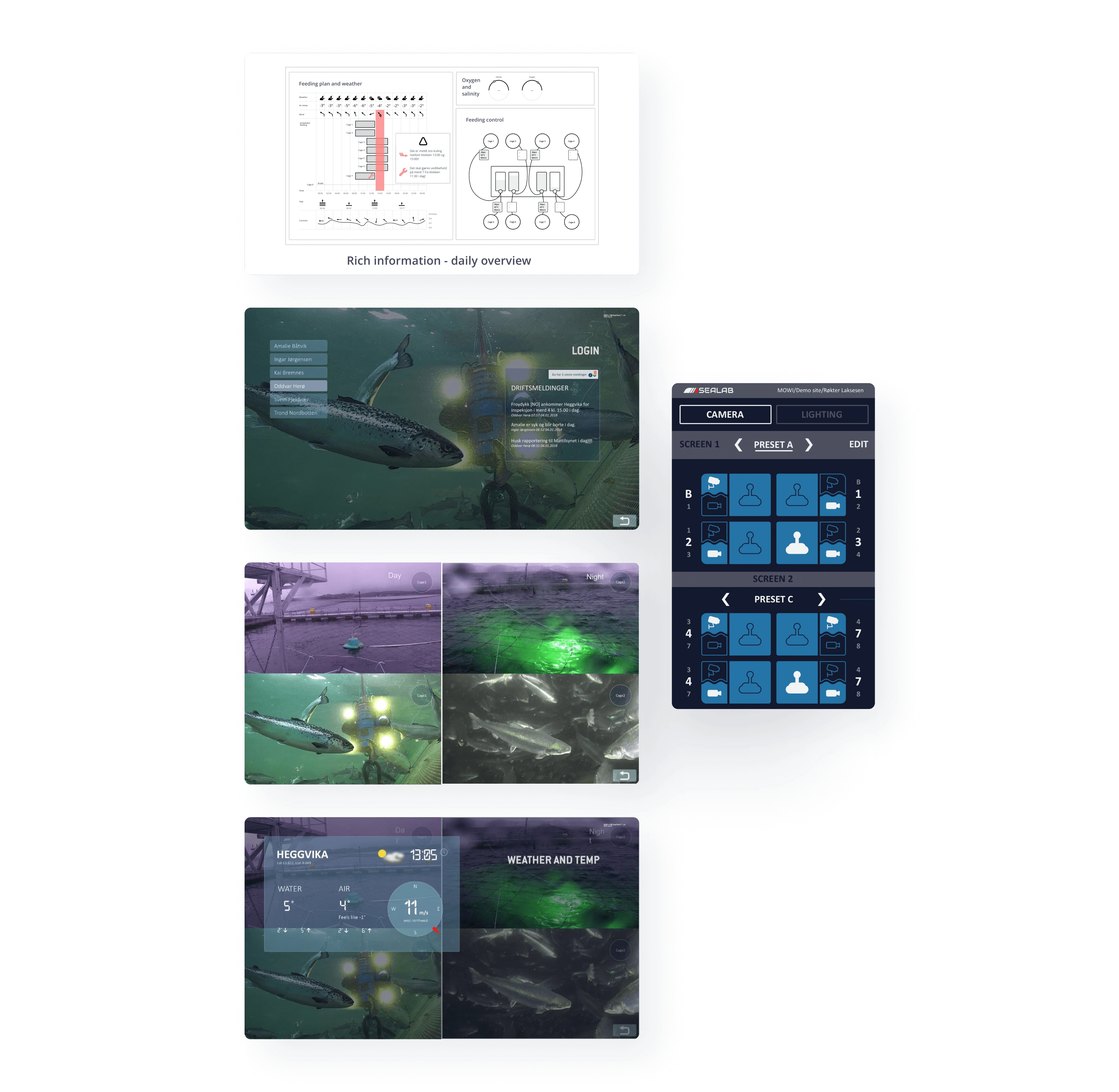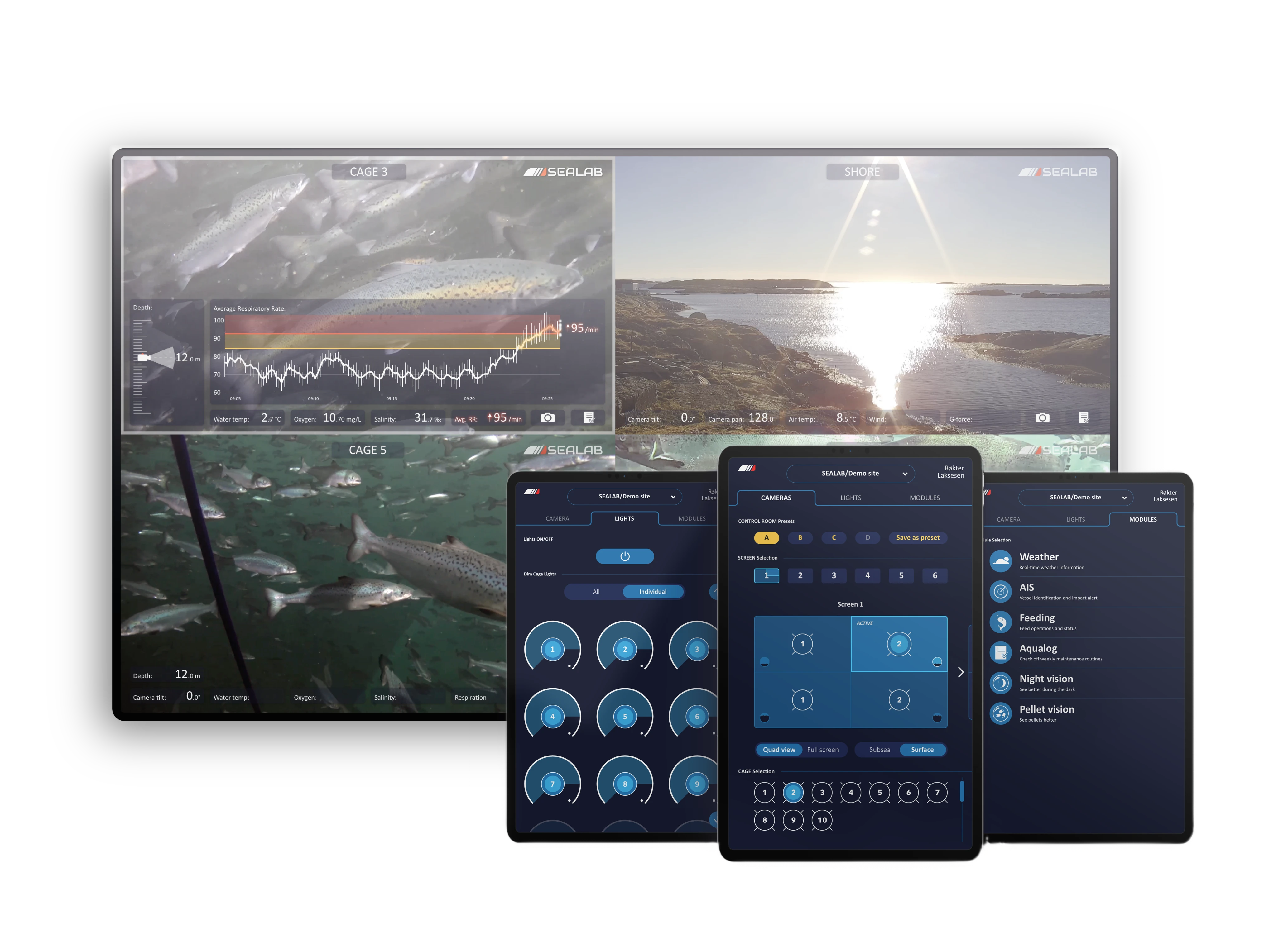BlueThink Control Room
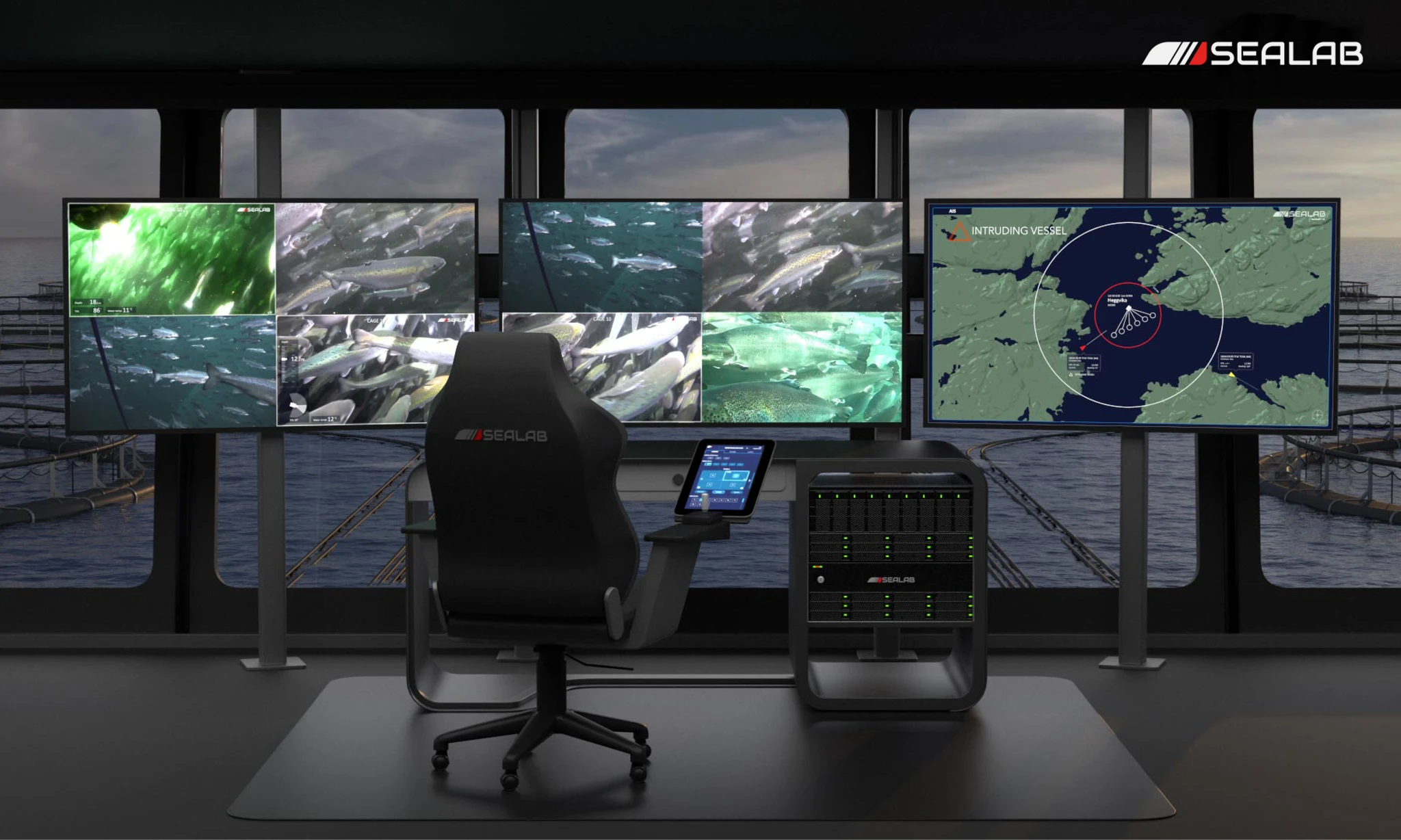
A visual interface with critical decision-making support for feeding and monitoring the conditions on a fish farm.
Role:
Product Design Consultant
Timeline:
Q1 2019 - Q4 2019
Client company:
Sealab Ocean Group
Company size:
15-20 staff members
Background
Sealab supplies underwater cameras to the aquaculture industry, cameras that capture exceptionally high-quality images, surpassing the current standards of aquaculture facilities. These images create opportunities for a new type of control room.
The BlueThink Control Room provides a visual interface with critical decision-making support for feeding and monitoring the conditions on a fish farm.
The formal education level of workers on fish farms and remote feeding facilities is diverse. Thus, the design of the interface has to be accessible to a range of users and show the necessary information in a sensible and intuitive manner.
Team and Role
My role consisted of design activities, such as conducting user interviews, and observations, making user personas, user journeys, user testing, and UX/UI design.
We were two designers who worked with Sealab as our client. Sealab had a small team of young developers, on AI image recognition, backend, and front-end.
Problem
We faced the design challenge of creating a versatile control room interface suitable for both local fish farms and larger land-based feeding centers. Our goal was to develop a user-friendly interface that could be utilized by individuals regardless of their educational background, whether they had completed high school or possessed an engineering degree.
Focus areas:
Data visualization
Prioritization of data sources for decision support in salmon farming.
Intuitive interface
Replace a large image mixer with an interface that does not require training.
Navigation and safety
Simplify the control room paradigm - what's redundant?
Process
To gain insights into Sealab's market position, we initiated a competitor analysis. Simultaneously, we commenced the process of understanding the users and their context by engaging in conversations with Sealab's employees, who maintained regular contact with their customers and the primary users of Sealab's equipment.
Promptly, we outlined the entrepreneurs' ideas and translated them into design concepts. This provided us with a clear understanding of the challenges at hand, and the desired direction Sealab aimed to pursue, and facilitated productive dialogue with the entrepreneurs.
Based on the concept sketches, we were able to discuss and outline new designs, together with the founders and developers of Sealab. In this way, we built on the entrepreneur's ideas with new ideas. It was important for Sealab to constantly shape the concept, and produce, based on strategic considerations and feedback from the customers and users.
Our job as designers was also to help control the development process of the new control room so that we produced quickly while making room to carry out a beneficial design process.
Research and Discovery
After working with the entrepreneurs for some time, they were confident in our abilities and relationship, and we had the opportunity to visit a fish farm and personally conduct on-site observations and interviews. Additionally, through our collaboration with Sealab's employees, we ensured that they posed our inquiries to users while working at the facilities. This approach allowed us to gain a deeper understanding and insights into the users' daily work routines.
Furthermore, on multiple occasions, customers and users visited Sealab's offices, enabling us to conduct user tests on the latest control room designs. This provided us with valuable feedback and allowed us to perform thorough user testing of the modules prior to their release to customers.
The Users
The primary users of the Bluethink Control Room were workers who operated at sea and had the crucial task of feeding the fish. These users often consisted of adult employees with extensive experience in farming, prioritizing practicality over technology in their daily lives.
Additionally, the control room was also accessible to teenagers or individuals in their early twenties who may not have completed high school but were adept at utilizing technology.
There was also the engineer who operated from the on-land feeding center, situated far from the fish farm itself. Their role involved managing and feeding multiple fish farm locations simultaneously.
Additionally, there were service workers, administrators, and management personnel who desired the capability to assume control room functions and access live information.
The formal education level of workers on fish farms and remote feeding facilities is diverse. Thus, the design of the interface has to be accessible to a range of users and show the necessary information in a sensible and intuitive manner.
Outcome
By the conclusion of our collaboration with Sealab, they had the capability to control multiple cameras, lights, and display various modules and images on screens within the control room. This control was facilitated through a tablet-based user interface design.
The tablet UI design (by me) and control room UI design (by me and my business partner) were in production in January 2020.
Reflections
Working as a designer with this start-up it was very important to me that we managed to gain the entrepreneur's trust and understand their priorities and business goals before we imposed too much "design process" into our work.
That is why we spent time, in the beginning, delivering very concretely on the ideas and aspirations of the CEO, who we worked closely with. After some time we had a number of initial designs, drawn upon secondary knowledge by everyone at Sealab, we had established practices where the Sealab worker would conduct inquiries and user tests when they were in direct contact with their customer, and only after this were we able to go out and do our own observations and interviews on location.
This was necessary to be successful while working with Sealab.
